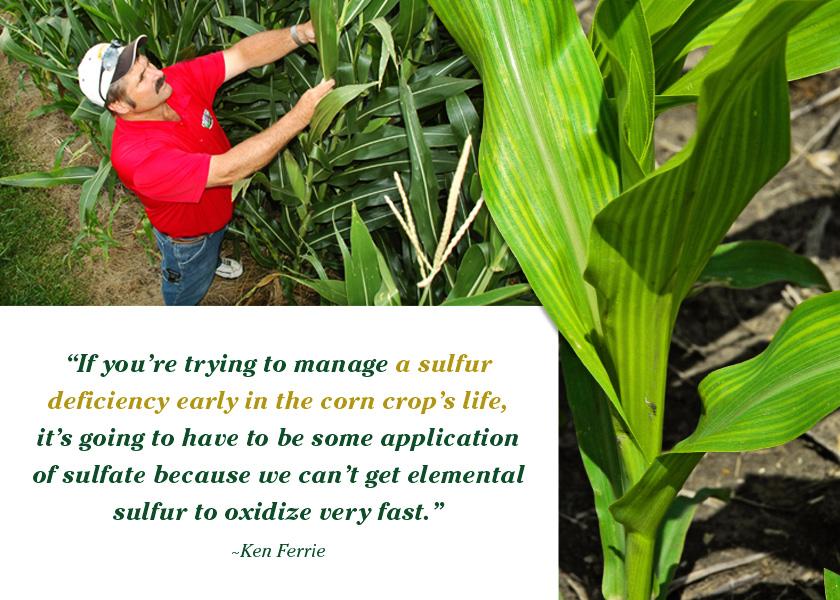What should we do to get the maximum yield in agriculture?

Maximizing Crop Yields Through Innovative Irrigation Strategies
Crop yields can be maximized in a number of ways, including through the use of innovative irrigation strategies. Irrigation is the process of supplying water to crops in order to ensure that they have enough moisture for optimal growth. Irrigation strategies can be used to increase crop yields by providing better water distribution, improved water-use efficiency, and better soil fertility management.
One of the most important aspects of irrigation is proper water distribution. This involves ensuring that the water is evenly distributed throughout the field, and that it is reaching the plants in the right amounts. This can be accomplished by using sprinkler systems, drip irrigation systems, or other irrigation equipment. These systems should be designed to provide the right amount of water to each plant, as well as to avoid overwatering or underwatering.
In addition to proper water distribution, another key aspect of irrigation is improving water-use efficiency. This involves using irrigation systems to ensure that the water is used in the most efficient way possible. This can be done by using sensors to measure soil moisture levels, and then adjusting the irrigation system accordingly. This ensures that the water is not wasted, and that it is being used in the most efficient manner possible.
Finally, irrigation strategies can also be used to improve soil fertility management. This involves using fertilizers, mulch, and other soil amendments to ensure that nutrients are available to the plants. This helps to ensure that the soil is healthy and that the crops are receiving the nutrients they need to grow. This can also help to reduce the amount of water that is needed for irrigation, as the soil will be able to retain more water.
Overall, innovative irrigation strategies can be used to maximize crop yields by providing better water distribution, improved water-use efficiency, and better soil fertility management. By using these strategies, farmers can ensure that their crops are receiving the right amount of water, nutrients, and other resources they need to grow. This can help to increase crop yields and improve crop quality, leading to greater profits.
Exploring the Benefits of Cover Cropping for Higher Yields
Cover cropping is the practice of growing a second crop on top of an established one, usually during the off-season. This technique has been around for centuries and is still used today to increase yields and improve soil health. Cover cropping helps to improve soil structure by increasing organic matter, reducing compaction, and improving water infiltration. It can also help to suppress weeds, reduce erosion, and increase nutrient availability.
One way cover cropping can increase yields is by providing additional nutrients to the soil. Cover crops can be used to fix nitrogen, add organic matter, and improve soil structure. This can lead to increased yields by allowing crops to better access the available nutrients in the soil. Additionally, the roots of the cover crop can help to break up soil compaction, allowing crops to more easily access the nutrients they need.
Cover cropping can also help to suppress weeds. Cover crops are often planted after the main crop is harvested and can be used to keep weeds at bay. This is especially useful in areas with high weed pressure, as the cover crop can help to reduce competition for resources. Additionally, cover crops can be used to attract beneficial insects, which can help to control pest populations.
Cover cropping is also a great way to reduce soil erosion. Cover crops can be used to protect the soil from wind and water erosion by providing a physical barrier. Additionally, the roots of the cover crop can help to hold the soil in place, reducing the risk of erosion. This can be especially beneficial in areas prone to heavy rains or flooding, as the cover crop can help to keep the soil in place and reduce the amount of soil lost.
Finally, cover cropping can also help to improve water infiltration. Cover crops can help to reduce soil compaction and increase organic matter, which can improve water infiltration. This can help to reduce runoff, allowing more water to reach the roots of the crop. This can lead to increased yields, as the crop will have access to more water.
Cover cropping is a great way to increase yields and improve soil health. It can help to add nutrients to the soil, suppress weeds, reduce erosion, and improve water infiltration. By utilizing cover cropping, farmers can get the most out of their crops and ensure higher yields and healthier soils.
Utilizing Fertilizer Management Techniques to Increase Yields in Agriculture
Fertilizer is one of the most important inputs in agriculture, and proper management of fertilizers can significantly improve crop yields. Fertilizer management involves selecting the right type of fertilizer, applying the correct amount of fertilizer, and applying it at the right time. In order to get the maximum yield from fertilizers, farmers should be aware of the different techniques that are available for fertilizer management.
Selecting the Right Type of Fertilizer
The first step in fertilizer management is selecting the right type of fertilizer. Different types of fertilizer are available, such as chemical fertilizers, organic fertilizers, and slow-release fertilizers. Each type of fertilizer has its own advantages and disadvantages, so it is important to select the right type of fertilizer for the specific crop or soil type. For example, organic fertilizers are often better for soil health, while chemical fertilizers may be better for quick results.
Applying the Correct Amount of Fertilizer
Once the right type of fertilizer has been selected, the next step is to apply the correct amount of fertilizer. Applying too much fertilizer can be harmful to the environment and can lead to decreased yields, while applying too little fertilizer can lead to poor crop growth. To ensure that the correct amount of fertilizer is applied, farmers should use soil tests to determine the nutrient levels in their soil and use this information to calculate the precise amount of fertilizer that should be applied.
Applying Fertilizer at the Right Time
The last step in fertilizer management is to apply the fertilizer at the right time. Fertilizers should be applied at the most opportune time to ensure that they are taken up by the plants and used efficiently. Additionally, different crops have different fertilizer requirements, so farmers should be aware of the specific timing requirements for the crop they are growing in order to get the maximum yield.
By utilizing the right fertilizer management techniques, farmers can ensure that their crops get the maximum amount of nutrients and can maximize their yields. Proper fertilizer management is an essential part of successful agriculture, and by following these steps, farmers can ensure that their crops are getting the nutrients they need to reach their full potential.
